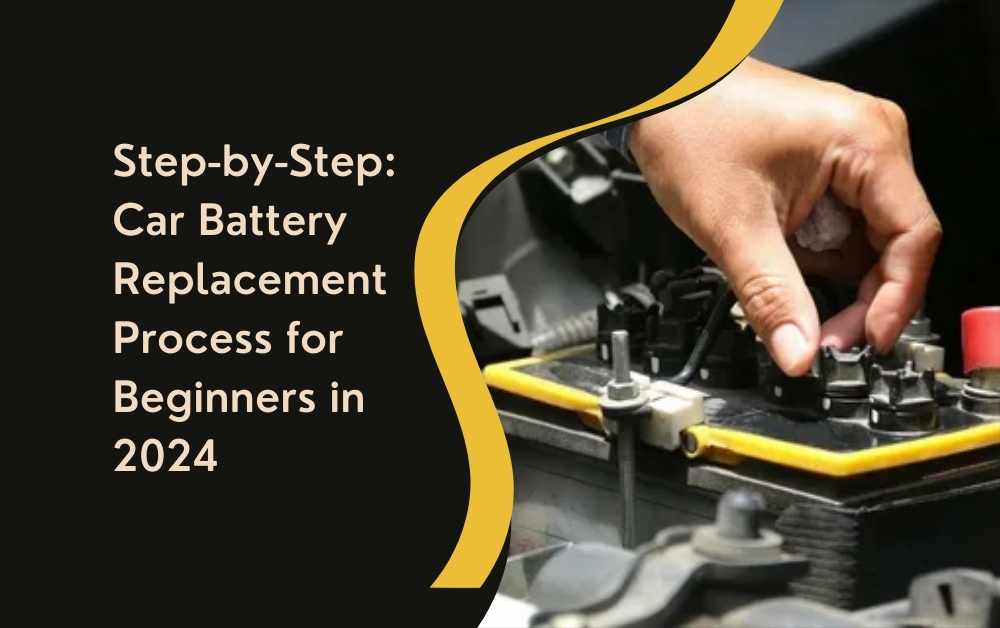
Welcome, beginner car enthusiasts! Whether you’re a new driver or just starting to get your hands dirty under the hood, learning to replace a car battery is a fundamental skill. In this step-by-step guide, we’ll walk you through the process of replacing your car battery in 2024. Don’t worry if you’ve never done it before; we’ll break it down into easy-to-follow steps using simple language that everyone can understand.
Why Replace Your Car Battery?
Before we dive into the car battery replacement process, let’s quickly touch on why you might need to replace your car battery. Over time, car batteries lose their ability to hold a charge due to factors like age, extreme temperatures, and frequent short trips. If you’ve noticed that your car is struggling to start or if the battery warning light is illuminated on your dashboard, it might be time for a replacement.
Tools and Materials You’ll Need
Before getting started, gather the following tools and materials:
Tools:
- Wrench or socket set
- Battery terminal cleaner or wire brush
- Safety gloves and goggles
Materials:
- Replacement car battery (make sure it matches your vehicle’s specifications)
- Baking soda and water (for cleaning battery terminals)
- Anti-corrosion spray or grease
Step 1: Safety First
Safety should always be your top priority when working on your car. Before starting the battery replacement process, make sure to:
- Park your car on a flat surface and engage the parking brake.
- Turn off the engine and let it cool down.
- Wear safety gloves and goggles to protect your hands and eyes from any acid or debris.
Step 2: Locate the Battery
The next step is to locate the battery in your vehicle. In most cars, the battery is located under the hood, either near the front of the engine bay or off to one side. Refer to your owner’s manual if you’re unsure where to find it.
Step 3: Disconnect the Battery Cables
Once you’ve located the battery, it’s time to disconnect the cables. Follow these steps:
- Identify the Positive (+) and Negative (-) terminals: The positive terminal is usually red, while the negative terminal is black.
- Loosen the nuts or bolts: Use a wrench or socket set to loosen the nuts or bolts securing the cables to the terminals. Start with the negative terminal first, then move on to the positive terminal.
- Remove the cables: Once the nuts or bolts are loosened, carefully remove the cables from the battery terminals. Be sure to keep them away from the terminals to prevent accidental reconnection.
Step 4: Remove the Old Battery
With the cables disconnected, you can now remove the old battery from your vehicle. Follow these steps:
- Secure the battery: If your battery has a mounting bracket or strap, remove it to free the battery from its housing.
- Lift out the battery: Carefully lift the old battery out of its compartment and set it aside.
Step 5: Clean the Battery Terminals
Before installing the new battery, take a moment to clean the battery terminals to ensure a good connection. Follow these steps:
- Mix a cleaning solution: In a small container, mix equal parts baking soda and water to create a cleaning solution.
- Scrub the terminals: Use a battery terminal cleaner or wire brush to scrub away any corrosion or debris from the battery terminals.
- Rinse with water: After scrubbing, rinse the terminals with clean water to remove any residue.
- Dry thoroughly: Use a clean cloth to dry the terminals thoroughly before proceeding.
Step 6: Install the New Battery
Now it’s time to install the new battery in your vehicle. Follow these steps:
- Position the battery: Carefully place the new battery into the battery compartment, ensuring that it is oriented correctly with the positive and negative terminals facing the right direction.
- Secure the battery: If your battery has a mounting bracket or strap, reattach it to secure the new battery in place.
Step 7: Reconnect the Battery Cables
With the new battery in place, it’s time to reconnect the battery cables. Follow these steps:
- Attach the cables: Start by attaching the positive cable to the positive terminal, then the negative cable to the negative terminal.
- Tighten the nuts or bolts: Use a wrench or socket set to tighten the nuts or bolts on the battery terminals securely.
- Apply anti-corrosion spray or grease: To prevent corrosion and ensure a good connection, apply a small amount of anti-corrosion spray or grease to the battery terminals.
Step 8: Test the New Battery
Before closing the hood and calling it a day, it’s essential to test the new battery to ensure everything is working correctly. Follow these steps:
- Start the engine: Turn the ignition key to start the engine and make sure it starts up smoothly.
- Check electrical systems: Test your headlights, turn signals, and other electrical systems to ensure they are functioning correctly.
- Monitor battery voltage: If you have a multimeter, you can use it to check the voltage of the new battery to ensure it is within the proper range.
Conclusion
Congratulations! You’ve successfully replaced your car battery like a pro. With the right tools, materials, and a little know-how, replacing a car battery is a manageable task for beginners and experienced DIYers alike. Remember to dispose of your old battery properly and follow any local regulations regarding battery disposal. Happy driving!
Note :- Read more related blogs at www.guestblogtraffic.com.





